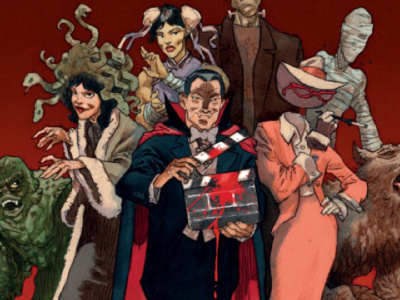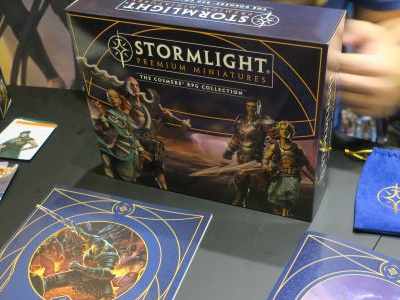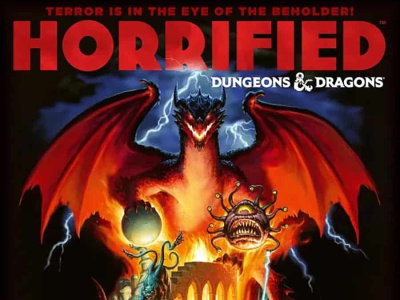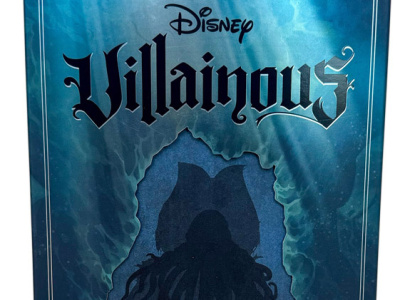Element
Publisher: Rather Dashing Games
Release Date (US): March 2017
MSRP: $34.99
Designers: Mike Richie & Grant Wilson
Players: 2 to 4
Playing Time: 30 minutes
Ages: 14 and up
Product #: 700001
ICv2 Rating: 4 Stars out of 5
Sometimes, the line between “abstract strategy game” and “strategy game with theme” is a little bit blurry. Such is the case with Rather Dashing Games’ new title Element. But don’t let that scare you, because Richie and Wilson have devised a clever little game with some thought-provoking mechanics.
Summary: Element is about a contest between “sages,” who have the ability to summon and manipulate the four classical elements of fire, earth, air, and water. The contest is played out over an 11 x 11 space grid. The sages use their power to conjure elemental stones, gradually filling the board and creating a landscape that shifts and evolves as the game progresses. By limiting the amount of elemental power they use, the sages can move across the board more quickly, which can help avoid traps set by the other sages. By balancing these two abilities, the sages hope to trap one another between the elements, while avoiding that fate themselves.
Originality: The game has a number of concepts that feel familiar. Placing stones on the board is reminiscent of many abstracts, and swapping the ability to place pieces for increased movement is nothing new either. But there are some clever twists here that give Element a fresh feeling. Each element has its own unique effect on the gameboard, of course, which can quickly alter the layout of the land, but just as importantly, each element can replace one other element, allowing players to make surprise moves and convert their opponent’s defenses into a new avenue of attack.
Presentation: The game board is delightfully illustrated in intricate Celtic-style knotwork, a decorative theme that is carried through the packaging itself. The art style hints at the semi-abstract nature of the game, while giving a good feel for the “elements” to which the game title refers. The graphics on the cover are a tad bit dark, I think, but they are clean and crisp and there is no loss of readability. The back of the box has a little description that captures the feel of the theme quite nicely, while showcasing the game’s beautiful components.
Quality: I give top marks here. It would have been easy to cut corners in this department, perhaps using glass stones or wooden disks for the game components. But instead, Rather Dashing has taken pains to use high quality components. The elemental “stones” are thick molded plastic coins embossed with the swirling knot symbol of the game (though I feel it is my duty to point out that it really would have been nicer if they were embossed with the symbol of the matching element, for those gamers who suffer from color identification woes). The stones are kept in a very large cloth bag, embroidered with the four element symbols. The four sages are each unique sculpts, molded from a surprisingly heavy resin material. The game board is thick and sturdy, and the rules are full color and glossy throughout. Even the box is excellent, certainly one of the sturdier game boxes I have encountered over the years.
I do, however, have one complaint about the rules themselves. During our playtests, we encountered a few unusual situations that we did not feel were adequately covered by the rules. No doubt these were the odd edge cases that probably would not occur in many games, but in retrospect I feel that they should have occurred to the designers during development and covered in the rules. None of our issues were major, however, and easily settled with some rational discussion.
Marketability: Abstract games and semi-abstract games always have an uphill climb in the hobby game market. But Element is beautifully produced with attractive artwork and graphics, while still having a very reasonable retail price. The gameplay is “easy to learn and hard to master,” as the cliche goes, and the game plays great with three players, always a difficult number to find good games for. These features, along with the quick playing time and engaging game system, all give Element a good chance of overcoming its “abstract-ness.”
Overall: I enjoy games that make me think yet are not so bogged down that the mental exercise becomes tiring. Games should be fun, after all. Element, for me, hits that spot almost perfectly. Every decision made affects the outcome of the game, yet no single decision feels like it is so important that the wrong choice will prove fatal. Instead, strategy develops over the course of the game, building naturally to a climax. And while planning ahead is certainly rewarded, the quickly-changing game board means that you must also change your strategy quickly to stay ahead. In the end, it’s probably going to be the first player to spot the winning opportunity that’s going to claim victory.
If you ask me, Element is, dare I say it, rather dashing indeed. Like a dapper, well-dressed gentleman, full of substance and depth, promising many hours of interesting conversation. And that’s why I’m giving this game 4 out of 5.
Click Gallery below for images of Element.
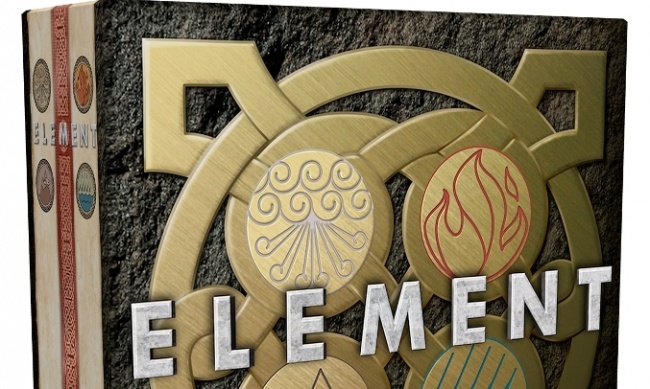
ICv2 Stars: 4 (Out of 5)
Posted by William Niebling on February 3, 2017 @ 7:01 pm CT
MORE GAMES
In 'Dracula vs. Hitler'; New RPG Just Unveiled by Devir Games
August 1, 2025
Devir Games unveiled Dracula vs. Hitler , a new RPG, that will be heading to BackerKit.
For 'Cosmere RPG'
August 1, 2025
Brotherwise Games previewed their Stormlight Premium Miniatures Collection, for Cosmere RPG.
MORE REVIEWS
ICv2 Stars: 3.5 (out of 5)
July 30, 2025
Here is a review of Ravensburger's Horrified: Dungeons & Dragons.
ICv2 Stars: 3.5 (out of 5)
July 24, 2025
Check out the review of Disney Villainous: Treacherous Tides, from Ravensburger.



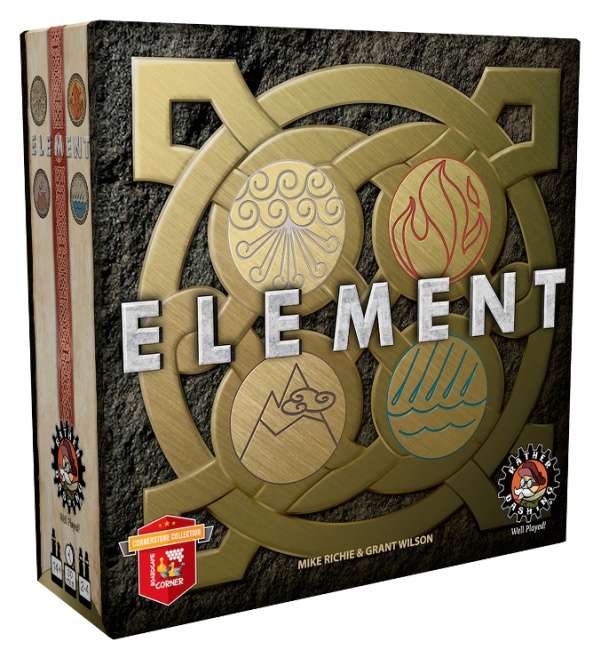
 View Gallery: 7 Images
View Gallery: 7 Images 